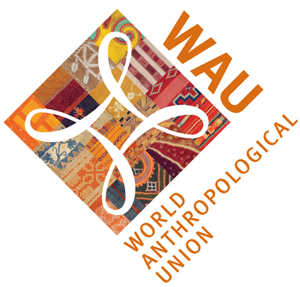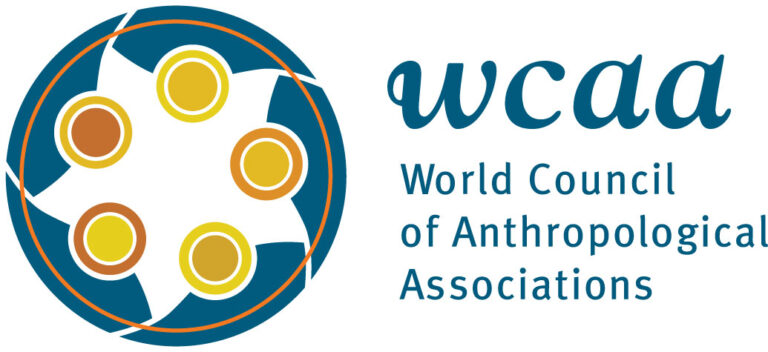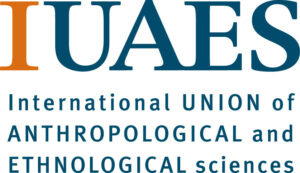
Devlieger, Clara. 2018. "Rome and the Romains: laughter on the border between Kinshasa and Brazzaville". Africa 88(1): 160-82.
This article considers humour at the international border between Kinshasa (DR Congo) and Brazzaville (Republic of Congo) as a means through which ordinary people navigate between fulfilling the values of individual opportunism and interpersonal responsibility. Kinshasa’s border zone, nicknamed Rome, often echoes with laughter as people who engage in unregulated livelihood strategies (Romains) engage in two genres of humour: verbal irony, expressed in nicknames for people, places and activities; and interpersonal joking, expressed in playful teasing. Laughter and jokes are a prevailing mode of interaction at the border, and the ways in which humour is constructed and experienced reveal much about social and moral life. The jokes define membership of a community of Romains distinct from other urban citizens, while making further distinctions between physically disabled people, who dominate trade as intermediaries, and others by playing with hierarchical social relationships in which disabled people are expected to be subordinate. Ultimately, the humour that shapes the community allows for a critical voice on values within it. This article argues that the inconsistencies pinpointed by humour reflect and shape the instability of social relationships and contradictory values that Romains aspire to fulfil. Humour is a means of navigating critical commentary on the conflicting values of individual aspiration and responsibility towards others.
Cet article traite de l’humour à la frontière internationale entre Kinshasa (RDC) et Brazzaville (République du Congo) comme moyen par lequel les gens ordinaires composent entre satisfaire les valeurs de l’opportunisme individuel et la responsabilité interpersonnelle. On entend souvent retentir des rires dans la zone frontalière de Kinshasa, surnommée Rome, là où ceux qui s’adonnent à des stratégies de subsistance non réglementées (les Romains) pratiquent deux genres d’humour : l’ironie verbale, qui s’exprime dans les surnoms donnés aux gens, aux lieux et aux activités ; et la plaisanterie interpersonnelle, qui s’exprime dans les taquineries. Le rire et la plaisanterie sont un mode d’interaction dominant à la frontière, et les modes de construction et d’expérience de l’humour révèlent beaucoup sur la vie sociale et morale. La plaisanterie définit l’appartenance à une communauté de Romains distincte de celle des autres citoyens urbains, tout en faisant d’autres distinctions entre les personnes vivantes avec un handicap physique, qui dominent les échanges commerciaux en tant qu’intermédiaires, et les autres en jouant sur les rapports sociaux hiérarchiques dans lesquels les personnes vivantes avec un handicap sont censés être les subordonnés. En définitive, l’humour qui façonne la communauté permet à une voix critique de s’exprimer sur les valeurs de cette communauté. Cet article soutient que les incohérences identifiées par l’humour reflètent et façonnent l’instabilité des rapports sociaux et les valeurs contradictoires que les Romains aspirent à satisfaire. L’humour est un moyen de maîtriser le commentaire critique sur les valeurs contradictoires d’aspiration individuelle et la responsabilité envers autrui.
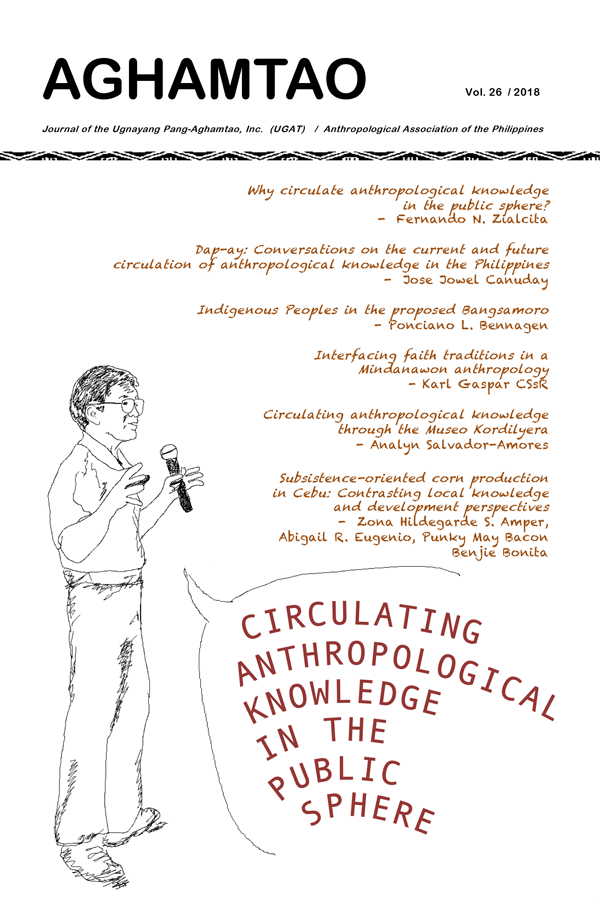
Mangahas, Maria F., Cynthia Neri Zias, Elinda Burton, Pamela Cajilig, Eizel Hilario Padmapani Perez and Suzanna R. Rolden. 2018. "Continuing Alongside the Katutubo – Current Challenges to Filipino Anthropology". Aghamtao 26: 101-120.
Based on interviews with UGAT members from varying sites of practice, supplemented by an examination of the UGAT membership records, we identify current challenges to communities and localities, the practical engagements of Filipino anthropologists, and the challenges faced by anthropology as a discipline in the Philippines. Among our findings: many UGAT members work in interdisciplinary settings, and struggle to balance output for academic and popular audiences. Graduate anthropology degrees are offered in only a handful of institutions, but innovative solutions such as regional consortia (although short-lived and funding-driven) have successfully overcome such limitations. Challenges to fieldwork range from security and militarization concerns to negotiating ‘consent’ given new legal and bureaucratic frameworks. Challenges for the practice of anthropology also arise from new emergent contexts—including: exponential tourism growth; rapid resource degradation; ancestral land title disenfranchisement; disaster, conflict, resettlement, and diaspora. Significantly, most of the engagements of anthropology practitioners are still conjoined with the situation of the indigenous Other. Other ‘non-IP’ issues also currently occupy the energies of anthropologists (such as urban problems), but certain important areas are neglected (such as maritime anthropology). Interactions between the State and large-scale private interests, vis-a-vis marginalized sectors comprise the prominent arena for research, applied work, or advocacy for practitioners, whether within academia, government, NGOs, or as consultants for private firms. Regardless of this apparent ‘niche’ for anthropology, popular recognition is lacking, and often inaccurate.
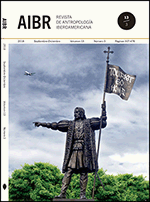
Juarez, Gerardo Fernandez. 2018. "Un kallawaya en la «Gran Vía». Notas de campo en Madrid (A KALLAWAYA MASTER IN MADRID’S GRAN VIA: FIELD NOTES ON MADRID)". AIBR, Revisto de Anthropologia Iberoamericana 13(3): 333-354.
One’s own —and other people’s— estrangement is a valuable topic in Anthropology when we explore new habits and scenarios: this article raises awareness of the critical abilities of those people who, being unfamiliar with their cultural surroundings, plainly criticize what they observe. In November 1996 the Casa de América in Madrid held a seminar on indigenous medicine together with a Kallawaya master, my friend Germán. His accurate analysis of the situations he experienced, not as much at the seminar as on the streets, is a valuable cognitive testimony of the expectations that a sage like him has when doing their trips and consultations in Bolivia. His observations are close to what would be expected from a "redneck", villager or parochial person in Madrid, Spain’s capital, but I argue that this is just a reflection of how uncomfortable those ones entrenched in their "urban" values can feel before Germán’s deep comments: in this situation the "redneck" is not the person expressing their surprise and discrepancies with their own —supposedly rural— worldview, but the one who cannot provide convincing arguments on the things being discussed and apparently misinterpreted by the "other".
El extrañamiento propio y ajeno constituye uno de los argumentos valiosos que podemos esgrimir en antropología cuando el trabajo de campo permite explorar otros hábitos y escenarios que no son los que habitualmente nos ocupan. Este artículo versa sobre este asunto: la capacidad que una persona no avezada en la realidad cultural que le rodea tiene para situar su crítica de manera contundente en el meollo de lo que observa sin necesidad de mayor información especializada. En noviembre de 1996, la Casa de América de Madrid organizó un seminario sobre medicinas indígenas, con la presencia de un médico kallawaya, mi amigo Germán. Su análisis proceloso de lo que tuvo oportunidad de vivir, no tanto en el seminario, sino en la calle, constituye un valioso testimonio cognitivo de las apreciaciones que un sabio como él acostumbra a realizar en sus viajes itinerantes y consultas terapéuticas en Bolivia. La aparente similitud de sus observaciones con la narrativa del «paleto», pueblerino o provinciano que pudiera plantear un madrileño al escucharle solo es reflejo de la reacción urticante de quien se siente profundamente desnudo ante el calado de sus manifestaciones. El «paleto» no es quien manifiesta sus sorpresas y contradicciones con respecto a sus visiones del mundo, sino quien es incapaz de dar argumentos convincentes sobre qué y quienes somos los observados en esa imagen que se nos figura tan distorsionada.
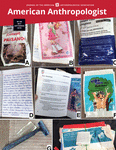
Sangaramoorthy, Thurka. 2018. "Putting Band-Aids on Things that Need Stitches": Immigration and the Landscape of Care in Rural America". American Anthopologist 120(3): 487-499.
Growing numbers of immigrants work and live in rural, geographically isolated areas throughout the United States, places without previously settled immigrant populations. Rapid immigration to such areas alreadystruggling with poverty, weak public infrastructures, and high concentrations of uninsured residents has given way to an increasingly precarious landscape of care. The neoliberal logics of American health care and contentious debates over immigration reform shape this landscape and condition relations among providers, immigrants, and others. Through what I call "band-aid" care and the informal transactions that characterize it, such as rationing, bartering, hoarding, willful noncompliance, and goodwill, providers and immigrants counter these logics of exclusion and inequality by participating in the dynamic improvisation of care considered illicit and often prohibited under the market-based economic rationale of health-care provision. Social obligations and moral legitimacy benefit otherwise marginalized providers who engage in this landscape of care, while vulnerable immigrants gain entry and access to vital resources within this landscape through sociality and interdependence, which engender opportunities (however fraught) for living. Yet providers and immigrants understand band-aid care to be necessary, just, moral, and legitimate in response to precarity characterized by geographical isolation, economic scarcity, civic inequality, market-based health care, and exclusionary policies.
Creciente nu´mero de inmigrantes trabajan y viven en a´ reas rurales, aisladas geogra´ ficamente alrededor de los Estados Unidos, lugares sin previas poblaciones inmigrantes asentadas. La inmigracio´ n ra´ pida a tales a´ reas que ya esta´ n luchando con pobreza, infraestructuras pu´ blicas de´ biles, y altas concentraciones de residentes no asegurados le ha dado paso a un paisaje del cuidado crecientemente precario. Las lo´ gicas neoliberales de la atencio´n me´ dica en los Estados Unidos y los debates contenciosos sobre la reforma migratoria determinan este paisaje y condicionan las relaciones entre proveedores, inmigrantes y otros. A trave´ s de lo que llamo la atencio´ n "con curitas" y las transacciones informales que la caracterizan, tales como el racionamiento, el trueque, el acaparamiento, el incumplimiento deliberado, y la buena voluntad, los proveedores y los inmigrantes oponen estas lo´ gicas de exclusio´ n y desigualdad a trave´ s de participar en la improvisacio´ n dina´mica de la atencio´ n considerada il´ıcita y a menudo prohibida bajo la racionalidad econo´mica basada en el mercado de la provisio´ n de la atencio´ n me´ dica. Las obligaciones sociales y la legitimidad moral benefician a proveedores que de otro modo ser´ıan marginados quienes se involucran en este paisaje de la atencio´ n, mientras inmigrantes vulnerables ganan entrada y acceso a recursos vitales dentro de este paisaje a trave´ s de la sociabilidad y la interdependencia, los cuales engendran oportunidades (sin embargo tensas) para vivir. No obstante, los proveedores e inmigrantes entienden la atencio´ n con curitas como necesaria, justa, moral y leg´ıtima en respuesta a la precariedad caracterizada por el aislamiento geogra´ fico, la escasez econo´mica, la desigualdad c´ıvica, la atencio´ n me´ dica basada en el mercado y las pol´ıticas excluyentes.

Errington, Frederick and Deborah Gewertz. 2018. "Managing an endangered species: Palliative care for the pallid sturgeon". American Ethnologist 45(2): 186-200.
The pallid sturgeon, formally listed in the United States as endangered since 1990, remains in trouble. Evolving in a free-flowing Missouri River, this ancient fish finds itself imperiled by a system of dams regulated by the US Army Corps of Engineers (USACE). The USACE must now confront the "wicked problem" of adjusting its envirotechnical regime of water management to address not only human economic interests but also antithetical fish-focused imperatives. To achieve a convincing balance, the USACE musters an array of bureaucratic practices that are seemingly beyond criticism. Through such practices, especially as publically performed at the quarterly meetings of the Missouri River Recovery Implementation Committee, the USACE affirms both itself and the envirotechnicalsystem it incarnates as the best the fish can expect.
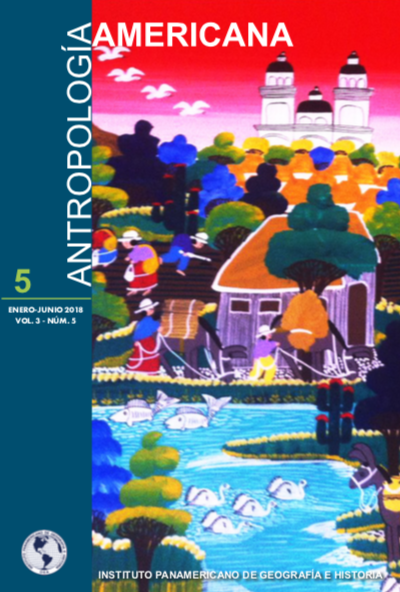
Maya Lorena Pérez Ruiz. 2018. "DEL RECONOCIMIENTO DE DERECHOS EN EL SIGLO XX A LA DEFENSA DE LOS TERRITORIOS INDÍGENAS EN EL SIGLO XXI". Antropología Americana 3(05): 41-51.
Durante el siglo XX en México se generaron políticas de Estado contrastantes en relación a los pueblos indígenas. A principios del siglo su presencia era un impedimento para los procesos de integración nacional que requerían forjar un Estado nacional cuya población estuviera unificado por una lengua, una cultura y una identidad común a todos. Al terminar el siglo, la diversidad cultural adquirió el valor de patrimonio cultural de la humanidad y es motivo de protección y fomento. En ese cambio de enfoque fue fundamental la lucha de los indígenas por conseguir el reconocimiento de sus derechos como pueblos dentro del Estado nacional. En este artículo se analiza la trayectoria de esta lucha y cómo en su confrontación con el gobierno mexicano se fueron modelando sus demandas, al mismo tiempo que las instituciones gubernamentales se transformaron para satisfacerlas, a pesar de lo cual persiste su condición subordinada y el despojo de sus recursos.
In twentieth century México, the State produced contrasting policies to indigenous peoples. At the beginning of the century its presence was an impediment to the processes of national integration that required forging a national State whose population was unified by a language, culture and identity. At the end of the century, the cultural diversity acquired the value of cultural heritage and it is a reason for their protection and promotion. In this new focus, the struggle of the indigenous people for their recognition was fundamental. This article analyzes the trajectory of this struggle and explain how its confrontation with the Mexican government were modeled, at the same time that the governmental institutions were transformed to satisfy them, in spite of which their subordinated condition and the dispossession of their resources.

Di Giminiani, Piergiorgio and Marcelo González Gálvez. 2018. "Who Owns the Water? The Relation as Unfinished Objectivation in the Mapuche Lived World". Anthropological Forum 28(3): 199-216.
Anthropological approaches to relations have customarily relied on ethnographic accounts of relations empirically observed through fieldwork, overlooking, in general, the ways in which the very notion of relation is locally conceptualised and put into practice. In this article, we provide a general characterisation of how relations are theorised and practiced in indigenous southern Chile. We propose the expression ‘unfinished objectivation’ to refer to an ideal type of relationship in the Mapuche lived world, which corresponds neither to a subject–object dichotomy nor to a totally intersubjective model. Unfinished objectivation presupposes a type of relation in which those entities that are connected are submitted to the force of one another, but only to the unstable and contingent point before which they lose their irreducible autonomy and agency. To explore the model of unfinished objectivation we focus on the human–water relationship, which illustrates the tension between the need for objectivation, as wellas recognition of the subjectivity of beings involved in the relationship. Nowhere is this tension clearer than in conflicts over water rights and ownership status, which have arisen from the commodification of water resources in neoliberal Chile.
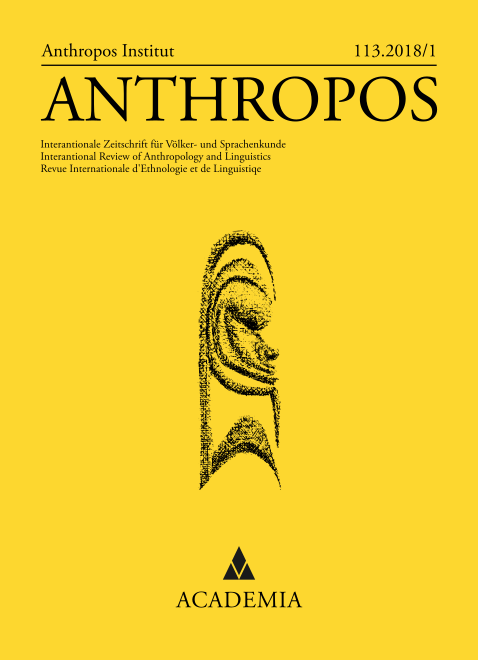
Shapiro, Warren. 2018. "Fifteen Complaints Against the New Kinship Studies". Anthropos 113.2018/1: 21-38.
Fifteen complaints are lodged against the so-called "new kinship studies" inspired by David Schneider. The main argument of these studies, that they get at indigenous appreciations, as contrasted with pre-Schneiderian analyses, supposedly entrapped in a Eurocentric model, is shown to be without merit. On the contrary, these latter analyses, far from assuming a procreative base for kinship worldwide, regularly discovered it in the field. Schneiderian kinship studies are shown to be grossly deficient from a scholarly standpoint, and to aspire to hegemony in the academy.

Chekero, Tamuka and Fiona C. Ross. 2018. "‘On paper’ and ‘having papers’: Zimbabwean migrant women’s experiences in accessing healthcare in Giyani, Limpopo province, South Africa". Anthropology Southern Africa 41(1): 41-54.
South Africa is signatory to international protocols that secure migrant rights to healthcare. Its national health policy prohibits discrimination. Pregnant women and children under six years ostensibly enjoy access to free healthcare, irrespective of migration status. What is clear "on paper," however, becomes considerably more opaque when experienced by those who do not "have papers." We explore this in Giyani, South Africa, an important migrant destination. Despite a progressive healthcare policy and immigrant rights regime, migrant women’s lack of proper documentation precludes them in practice from accessing state-provided reproductive healthcare. The result is twofold. Women who are entitled to public healthcare prefer to make use of private healthcare, despite the costs, and they make recourse to a range of extra-state relations for healthcare. We focus on one unexpected consequence: that the same healthcare providers who have formally refused access to state institutions may be available to migrants through personal networks, such as in churches. Here, medical care is seen as taking place in a religious register. The difference between what is "on paper" and "what papers migrants have" is critical but may be mediated by access to other realms of the social.
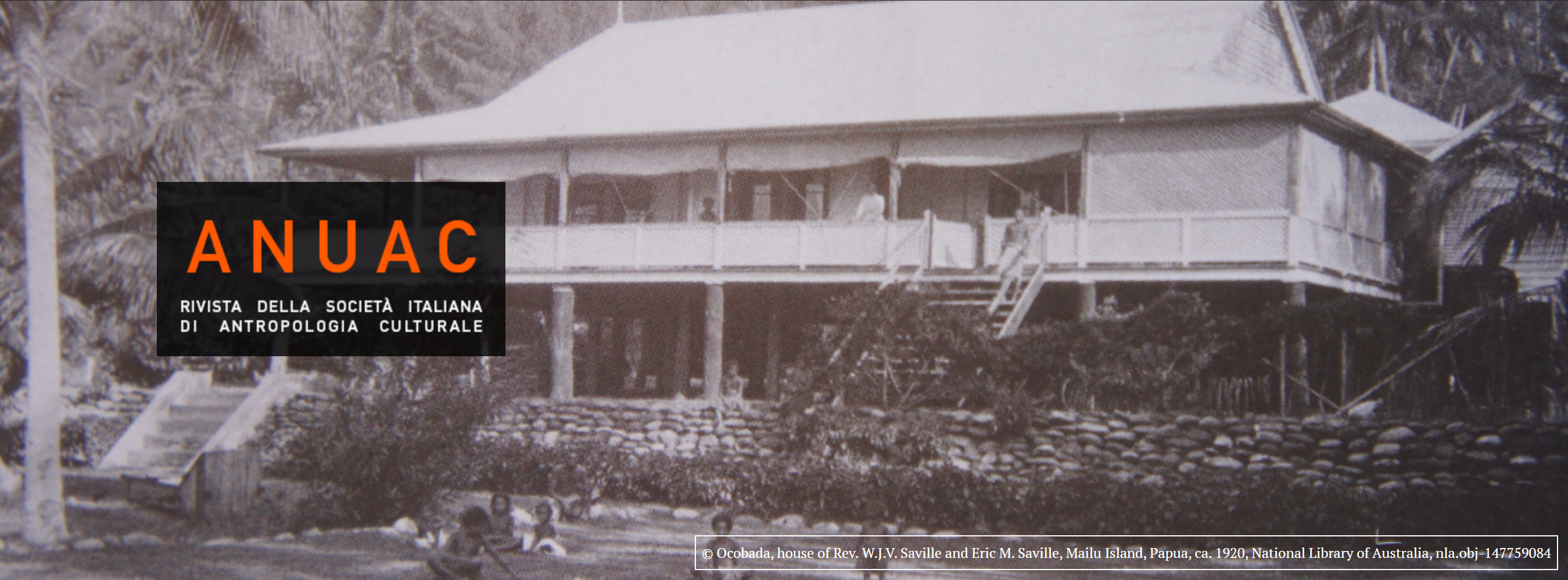
Strathern, Marilyn. 2018. "Infrastructures in and of ethnography". ANUAC 7(2): 49-69.
This contribution invites reflection on some of the conditions under which ethnographic enquiry is carried forward. Taking its cue from the concept of infrastructure, commonly understood as the practical supports underpinning an enterprise, it extends the notion to include ideas or assumptions that may be sustaining the purpose of enquiry. It thus takes practical and ideational supports in tandem. Intermittently visible, falling beyond the purview of the topics being investigated, and thus rather less than explicit contexts for research, the infrastructures of ethnographic work afford some insight into its changing circumstances. Importantly, these include changing orientations towards or conceptualizations of the kinds of objects of knowledge regarded as its ultimate aim. The reflections are exercised on materials from Oceania, from both the beginning and the end of the century that Bronislaw Malinowski inaugurated upon his arrival in the Trobriand district of Kiriwina in 1915.
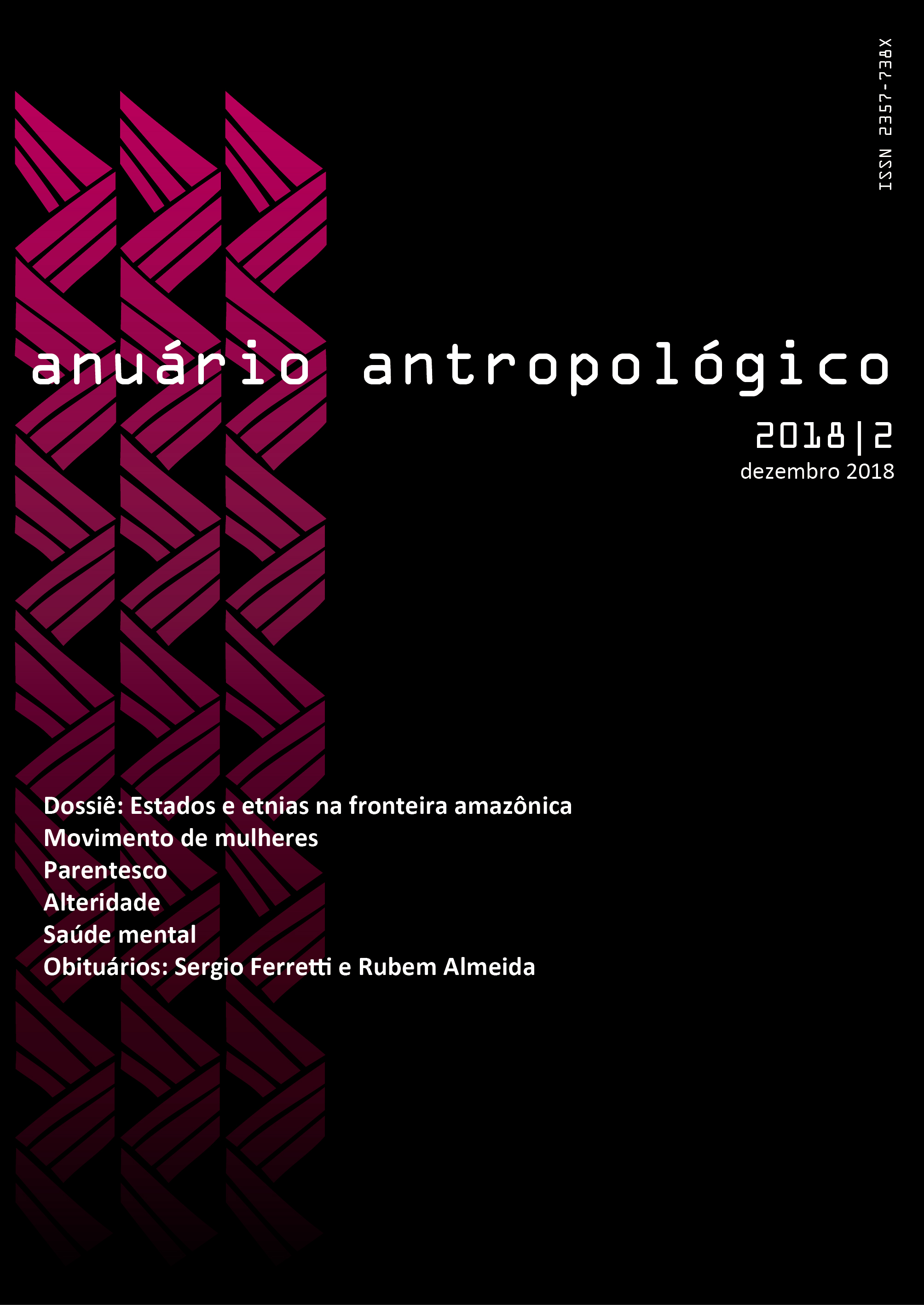
Cayón, Luis. 2018. "O lenço de pano e o buquê de flores Estados nacionais e os povos tukano orientais na fronteira colombo-brasileira". Anuário Antropológico 43(2): 83-111.
Este artigo explora os modos como a construção histórica dos estados nacionais na região fronteiriça entre Colômbia e Brasil afetou as relações entre os Tuyuka e os Makuna, povos tukano orientais, localizados no alto rio Tiquié (Brasil) e no rio Pirá Paraná (Colômbia), ao mesmo tempo que analisa as formas e estratégias dos indígenas para lidar com ambos os Estados. Destaca-se a maneira como a lógica indígena entende a fronteira como um espaço não estatal, onde, apesar da coerção dos Estados, é possível tomar elementos das instituições que estes lhes impõem para manter sua lógica contra o Estado e resgatar, num novo contexto, as relações rompidas pelo processo histórico.
This article explores the ways in which the rise of nation-states at the Colombia-Brazil border has affected the relationships between the Tuyuka and Makuna, Eastern Tukanoan peoples who live by the Upper Tiquié River (Brazil) and Pirá Paraná (Colombia),respectively. It also analyzes the indigenous strategies to deal with both states. The central point to the article is the way these Indians understand the international border as a non-state space, where, despite coercion, they can appropriate features of the institutions imposed on them by these states to maintain their anti-state logic and retrieve historically broken relationships in a new context.

Deiana, Alessandro. 2018. "Traiettorie del filologicamente corretto. Il campo del folklore nell’operato di un maestro contemporaneo delle danze sarde (Trajectories of the Philologically Correct. The Folklore Field in the Work of a Contemporary Master of Sardinian Dances)". Archivio antropologico mediterraneo 20(1): 1-28.
This article aims to show some little explored articulations of the philologically correct category in the anthropological field. The thesis that we intend to demonstrate is that the philologically correct is not only a critical tool at the service of institutional and cultured vision, or a rhetorical tool at the disposal of heritage policies: it can also be used from below for the purpose of a local micro-counter-hegemony. The dissertation will develop starting from a conceptual framework of the philologically correct and comparing it with the similar but different concept of authenticity. The notion of folklore field will then be illustrated as giving meaning and reason to the processes of authentication and to the practice of philologically correct in a context of reflexive popular culture. The ethnographic focus will be based on the particular trajectory of the philologically correct in the context of the practice of so called traditional Sardinian dances, with particular regard to the work of a Sardinian Campidanese dance master, who will be considered as a popular philologist moving in a multifaceted and polemic scene which includes folk troups, dance enthusiasts and dancers “in the field”.
Questo articolo si propone di mostrare alcune articolazioni poco esplorate della categoria di filologicamente corretto in ambito antropologico. La tesi che si intende dimostrare è che il filologicamente corretto non sia solo uno strumento critico al servizio della vi sione istituzionale e colta, o uno strumento retorico a disposizione delle politiche patrimonia li: può invece anche essere impiegato dal basso ai fini di una micro-contro-egemonia locale. La trattazione si svilupperà partendo da un inquadramento concettuale del filologicamente corretto e confrontandolo col concetto affine ma differente di autenticità. Verrà poi illus trata la nozione di campo del folklore come ciò che dà senso e ragione ai processi di autenticazione e all a pratica del filologicamente corretto in un contesto di cultura popolare riflessiva. Il focus etnog rafico sarà concentrato sulla particolare traiettoria del filologicamente corretto nel contesto della p ratica delle danze sarde dette tradizionali, con particolare riguardo all’operato di un maestro di ballo sardo campidanese, che verrà considerato come un filologo popolare che si muove in una scena sfaccettata e polemica della quale fanno parte gruppi folklorici, cultori dell a danza e ballerini di piazza.
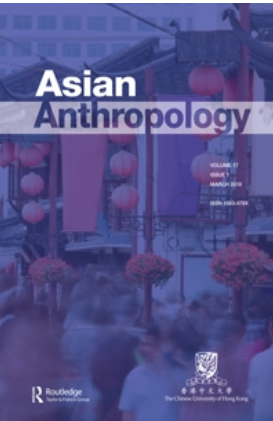
Wright, James. 2018. "Tactile care, mechanical Hugs: Japanese caregivers and robotic lifting devices". Asian Anthropology 17(1): 24-39.
This article explores the attempted introduction of a lifting robot called "Hug" into an elderly care home in Japan. As demand for institutional elderly care in Japan escalates due to population aging and a move away from familial care, the shortage of professional care staff is also intensifying. Attributing this shortage partly to carers’ endemic back pain, the Japanese government and corporations have poured resources into developing high-tech robotic lifting devices. Yet contrary to their expectation, many Japanese caregivers seem reluctant or even hostile to the idea of using such devices. I use fieldwork data to explore why this is the case, and find that lifting is situated within a practice of tactile, joking care aimed at ensuring anshin (安心; "peace of mind") for both care staff and residents. Mechanical replacement of this tactile connection was strongly resisted as "disrespectful" by care staff.

Cañuqueo, Lorena. 2018. "TRAYECTORIAS, ACADEMIA Y ACTIVISMO MAPUCHE". AVÁ 33: 58-77.
Responding to the challenge of the coordinators of the present dossier regarding the relationship between "indigenous intellectuals and the social sciences", implies blazing a trail constituted by the diverse transcendental moments that links trajectories of activism, such as expressions of collective organization strategies, with the political life of the Mapuche movement in Argentina. Moreover, the way in which ethnography and activism have converged in investigations and the production of "native" explanatory frames is addressed here as a way of interpellating models of political action and the construction of belonging. By looking at the significant moments mentioned above, we extract reflections from those intersections during a historical period that takes in an increase in the harshness of state violence in Mapuche lands.
Responder al desafío propuesto por las coordinadoras de este dossier sobre la relación entre "intelectuales indígenas y ciencias sociales" implicó emprender un camino de por sí constituido por diversos momentos trascendentales en la articulación entre trayectorias de activismo, la expresión de formas colectivas de organización y la vida política del movimiento mapuche de Argentina. A eso se suma la manera en que etnografía y activismo han confluido en investigaciones y la producción de marcos explicativos "nativos" como forma de interpelar modelos de acción política y de construcción de pertenencias. Retomando esos momentos significativos, se articulan aquí algunas reflexiones desde esos múltiples cruces, en un momento atravesado por el recrudecimiento de la violencia estatal en el territorio mapuche.
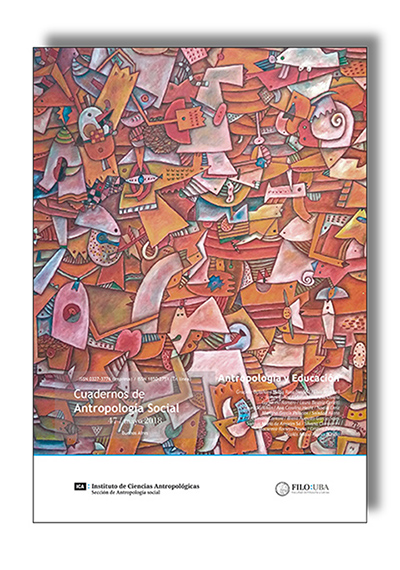
Cerletti, Laura and Laura Santillán. 2018. "Responsabilidades adultas en la educación y el cuidado infantile Discusiones histórico - etnográficas (Adult responsibilities in children’s education and care. Historical ethnographic discussions)". Cuadernos de antropología social 47: 87 - 103
Na atualidade, no domínio da educação e da intervenção em crianças, tem sidohegemonizado um discurso que instala um reparto de responsabilidades relativamentenovo, que exalta a figura parental como uma condição de bem-estar e o desenvolvimento das crianças. Em concordância com uma perspectiva antropológica, vamos pensar o caráter histórico de sua construção, bem como os significados e disputas que ocorrem no domínio da vida prática. Assim, nes te artigo, analisaremos algumas das continuidades e rupturas nas representações hegemônicas sobre as responsabilidades dos adultos na educação e na criação dos filhos, assim como as apropriações que ocorrem nas situações corriqueiras. Vamos basear - nos sobr e os registros etnográficos realizados em nossos processos de pesquisa; o trabalho de campo foi realizado na Cidade de Buenos Aires e na áreas de Grande Buenos Aires.
In the field of education and intervention on childhood, contemporarily, a discourse establishing a relatively new distribution of adult responsibilities that enhances parental figures as a condition for children’s wellbeing and development has become hegemonic. According to an anthropological perspective, in this paper we analyze continuities and change in hegemonic representations of adult responsibilities regarding the educationand upbringing of children, as well as the diverse appropriations that take place in everyday-life contexts. Analysis is based on the ethnographic accounts constructed throughout our research processes, during which fieldwork was conducted in the City of Buenos Aires and its suburbs.
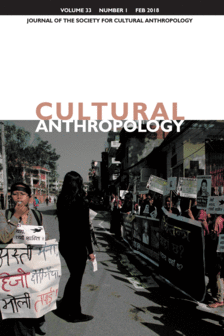
Luna, Sarah. 2018. "Affective Atmospheres of Terror on the Mexico-U.S. Border: Romors of Violence in Reynosa’s Prostitution Zone". Cultural Anthropology 33(1): 58-84.
This article examines the effects of rumors within the Mexican and U.S. governments’ militarized war on drugs. Focusing on a period during which Mexican drug organizations were strengthened and violence increased, the article follows the lives of Mexican sex workers and their clients, as well as American missionaries living in a prostitution zone in Reynosa, Tamaulipas. Borders between narco-controlled and state-controlled territory were shifted in and through the bodies of Reynosa’s residents as a contagion of performative rumors came to occupy la zona. As residents told or listened to stories about torture and murder at the hands of narcos, their perceived vulnerability increased and fear came to predominate. In this article I theorize how rumors of violence shaped affective atmospheres of terror and altered spatial practices in a drug-war zone. Feelings of bodily risk first affected vulnerable populations and later spread to people who had previously felt secure in border zones. These narcostories not only circulated terror but also allowed people to achieve intimacy and maintain social bonds through the shared experience of terror.

Sabaté, Irene. 2018. "To repay or not to repay: financial vulnerability among mortgage debtors in Spain (Pagar ou não pagar a dívida: vulnerabilidade financeira entre os devedores de crédito para compra de habitação em Espanha)". Etnográfica 22(1): 5-26.
In the framework of the current wave of home repossessions, many Spanish households struggle to keep up with repayments before going into arrears. Their financial vulnerability is not a simple function of the availability of income as they are repaying debts. Rather, it is to be understood in combination with a differential access to other resources that may help households to cope with hardship. Factors that help to keep up with repayments may include the availability of material aid and non-economic resources, such as information or social connections. But, at a certain stage, debtors may benefit less from aid to keep up with repayments, than from the advice to give them up, a decision that implies challenging the moral obligation to repay and devoting much time and effort to negotiation with the creditor. The availability of these resources needs to be considered in order to understand the (re)production of social inequalities linked to financial vulnerability as a result of mortgage default.
No quadro da vaga atual de execução de hipotecas de casas, muitas famílias espanholas fazem grande esforço para pagar a tempo as prestações de empréstimos contraídos para a compra de habitação, tentando não entrar em incumprimento. A sua vulnerabilidade financeira não é mera função do rendimento de que dispõem quando têm dívidas a pagar e deve ser entendida em combinação com o acesso diferenciado a outros recursos que poderão ajudá-las a fazer face às dificuldades. Entre os fatores que facilitam o pagamento das dívidas poderão estar a disponibilidade de ajuda material e recursos não económicos, como a informação ou as relações sociais. Porém, a um certo nível, o mais vantajoso para os endividados pode não ser a ajuda para cumprirem com os pagamentos, mas sim o conselho de que deixem de pagar as prestações, uma decisão que implica pôr em causa a obrigação moral do pagamento da dívida e dedicar muito tempo e esforços à negociação com o credor. A disponibilidade desses recursos deve ser considerada para se compreender a (re)produção das desigualdades sociais ligadas à vulnerabilidade financeira resultante do incumprimento no pagamento dos empréstimos.
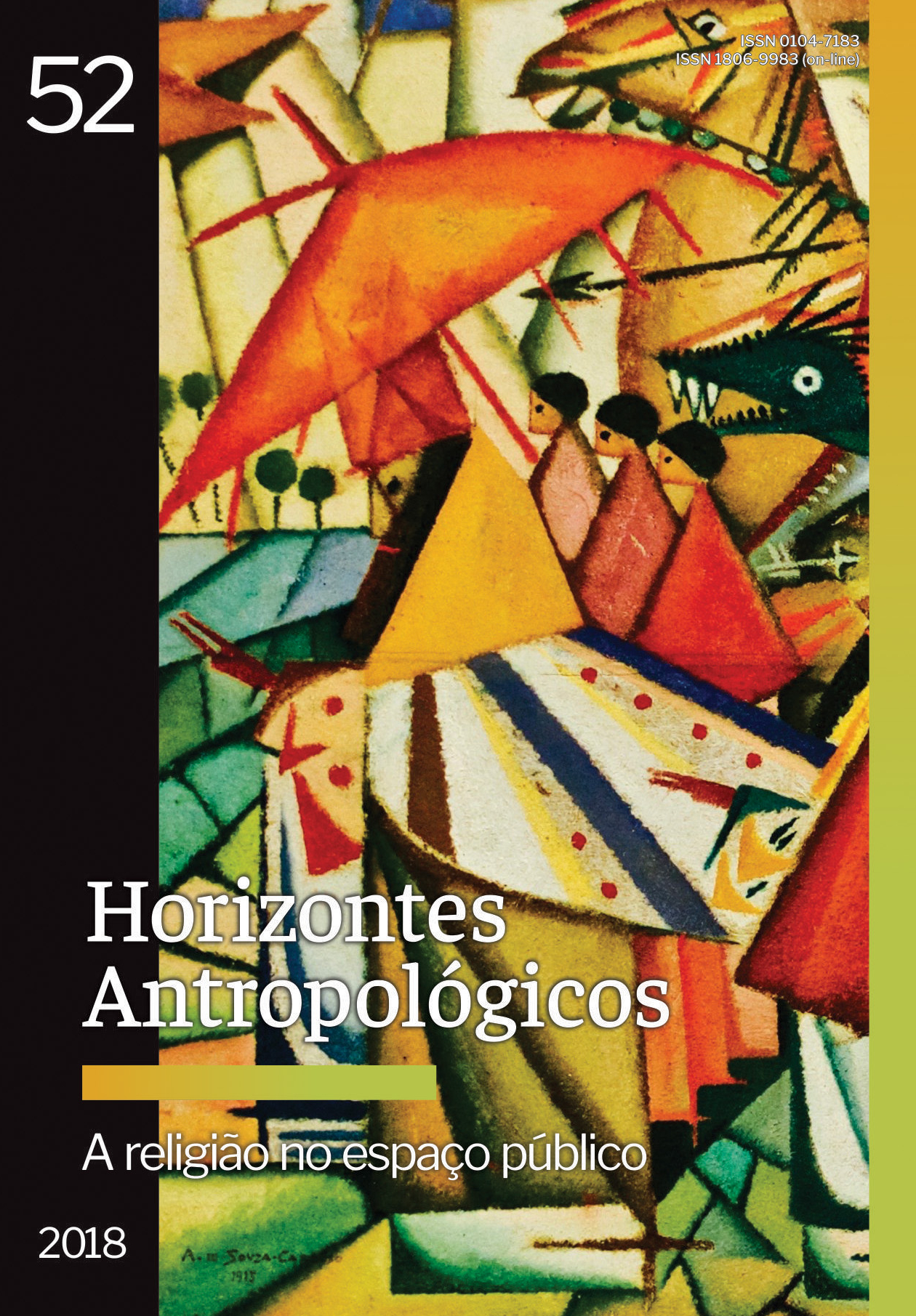
Visacovsky, Sergio E. 2018. "The days Argentina stood still. History, nation and imaginable futures in the public interpretations of the Argentine crisis at the beginning of the twenty-first century". Horizontes Antropologicos 24(52): 311-341.
This article is focused on public interpretations of the Argentine “crisis” at the beginning of the twenty-first century as necessary conditions for the constitution of the event. Such interpretations held that Argentina was dominated by a kind of evil force originated a long time ago, but whose effects persisted in the present. And, unless it was conjured once and for all, it would remain active and damaging in the future. Thus, the “crisis” was seen as an episode of the continuous failures. Based on opinion pieces or leading articles in newspapers and general interest and political magazines, academic articles and books, I want to show how the imagination of possible futures depended on the conceptions of temporalities implicit in the interpretations embedded in narratives and different valuations of events, figures and ideas. These gave historical specificity to the event and led to the emergence of new scenarios for political action.
O propósito deste artigo é mostrar como as interpretações públicas da "crise" argentina no início do século XXI foram condições necessárias para a constituição do evento. Tais interpretações sustentavam que a Argentina era dominada por uma espécie de força maligna originada há muito tempo, mas cujos efeitos persistiram no presente. E, a menos que ela fosse conjurada de uma vez por todas, permaneceria ativa e prejudicial no futuro. Assim, a "crise" foi vista como um episódio do fracasso contínuo da nação. Com base em colunas de opinião ou editoriais em jornais e revistas de interesse geral e político, artigos acadêmicos e livros, quero mostrar como a imaginação de futuros possíveis dependia das concepções de temporalidades implícitas nas interpretações expressas em narrativas e diferentes avaliações de eventos, personagens e ideias. Estes deram especifi cidade histórica ao evento e levaram ao surgimento de novos cenários para a ação política.

Esbell, Jaider. 2018. "MAKUNAIMA, O MEU AVÔ EM MIM!". Iluminuras. 19(46): 11-39.
I happen, artistically speaking, I believe, in a process that invites us to think critically about decolonization, cultural appropriation, Christianity, monotheism, monoculture and all the dilemmas of globalized existence. Or not? My emergence comes along with the expectation that is created around another term, in Brazil at least, contemporary Indian art. Not the modern, the past and extinct, not yet to come, but the beginning of the twenty-first century. Essay writing to socialize a little the socializable of my relationship with my grandfather, the one who is not exactly people to not be. So Makunaima is my grandfather and the genre, form and content have their places of action as we will always quote, because they are fundamental, but we must go further. Makunaima is beyond and proves this by continually transforming himself. No, he is not a convert. We will gradually dissociate Makunaima's existing-action from the cognitive effects of gender in our minds. Yes, in the minds. Readers are required to have a total interior vacuum, a nudge inside to have room. In a grand design, a total emptying of one being is required for another to be fit.
Eu aconteço, artisticamente falando, acredito, dentro de um processo que nos convida a pensar criticamente a decolonização, a apropriação cultural, o cristianismo, o monoteísmo, a monocultura e todos os dilemas do existir globalizado. Ou não? O meu surgimento vem junto com a expectativa que se cria em volta de outro termo, no Brasil ao menos, a arte indígena contemporânea. Não a moderna, a passada e extinta, nem a por vir, mas a deste início do século XXI. Ensaio escrever para socializar um pouco o socializável da minha relação com meu avô, esse que não é gente exatamente para não sê-lo. Portanto Makunaima é meu avô e o gênero, a forma e o conteúdo têm seus lugares de ação como vamos citar sempre, pois são fundamentais, mas é preciso ir além. Makunaima está além e prova isso ao transformar-se continuamente. Não, ele não é transformista. Vamos dissociar aos poucos o existir-atuação de Makunaima dos efeitos cognitivos do gênero em nossas mentes. Sim, nas mentes. Aos leitores é requerido um vácuo total interior, um nudar-se por dentro para ter espaço. Em uma grande concepção, é requerido um esvaziamento total de um ser para outro ser caber.
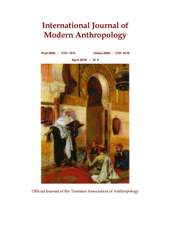
Mabvurira, Vincent and Jabulani Calvin Makhubele. 2018. "Children of the forests: child gatherers and traders in non-wood forest products in the Mazowe Valley area in Zimbabwe.". International Journal of Modern Anthropology. 2(11): 48-62.
Non-wood forest products play a stupendous role in the lives of many people across the globe. The products contribute immensely to household economies as they are either consumed or sold. The object of this study was to give an account of child gatherers of non-wood forest products in the Mazowe Valley area in Zimbabwe. The study adopted a qualitative approach in which data were gathered from 27 children through participant observations and informal interviews. Children were found to actively participate in the collection and trading of non wood forest products. Child collectors of the products are ranged in age from 4 to 17 years. Some of the children lived in child headed households while some lived with their parents. The NWFPs collected include fodder, small animals, insects, mushroom and wild fruits. Income realized from the sale of the products was used for buying food, clothes, goodies, and paying school fees. It is therefore concluded that non-wood forest products contribute towards poverty reduction, enhance well-being and capabilities, ascertain livelihood adaptation, vulnerability and resilience and natural resource base sustainability.

Elzbieta Drazkiewicz. 2018. "Interview: Anthropology for and in Troubled Times. Interview with Douglas Holmes, on the occasion of the 2017 Maynooth Ethnography Winter School". Irish Journal of Anthropology 21: 116-122.
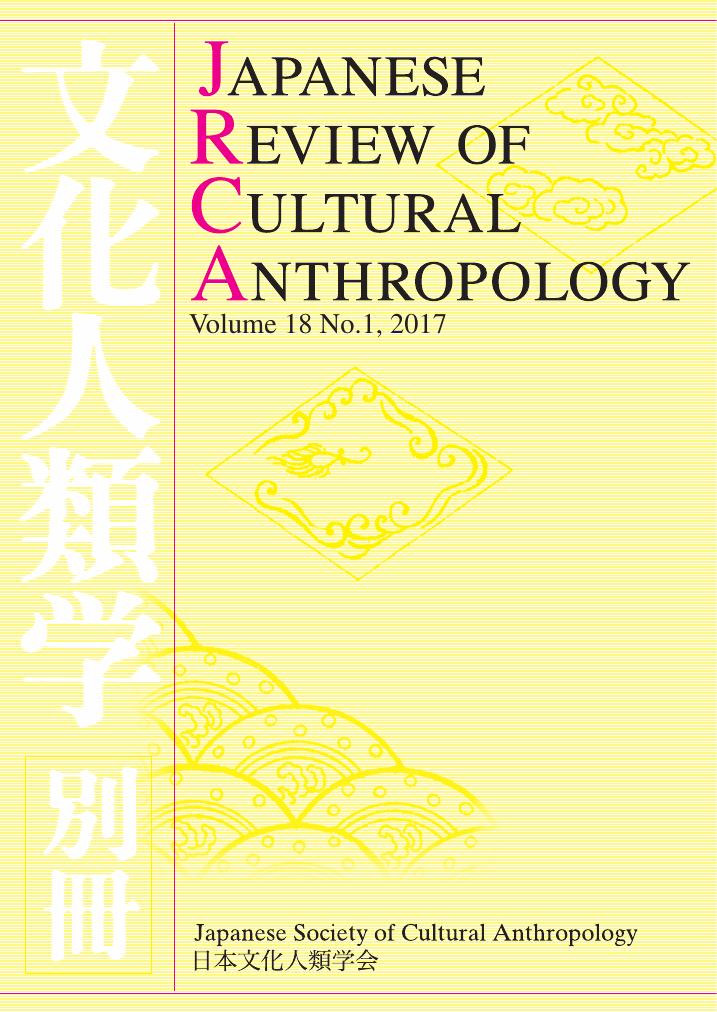
Ito, Kozue. 2017. "Generative Moments in the Enactment of the Japanese Tea Ceremony". Japanese Review of Cultural Anthropology 18(1): 69-89.
Studies on the tea ceremony have tried to answer the question, "What is tea?" for decades from historical and philosophical points of view. This paper deliberately converts the viewpoint from such an essential one to a processual one, in order to elucidate the generative moments in the enactment of the tea ceremony. Employing a perspective on the anthropology of art put forth by Alfred Gell, this paper analyzes a tea connoisseur’s enactment of the tea ceremony. Contrary to the former anthropological, symbolic analyses of the tea ceremony, an enactment of a tea ceremony is not perfectly prescribed, but temporarily engendered by communication between host and guests through conversation via things (i.e., utensils) as a medium of their agency. Yet, because every single tea ceremony is nonrecurring temporary event, these utensils—indexes in the enactment of a tea ceremony—do not exist forever. Instead, the repetition of the generative moment weaves out the social, relational world of tea.
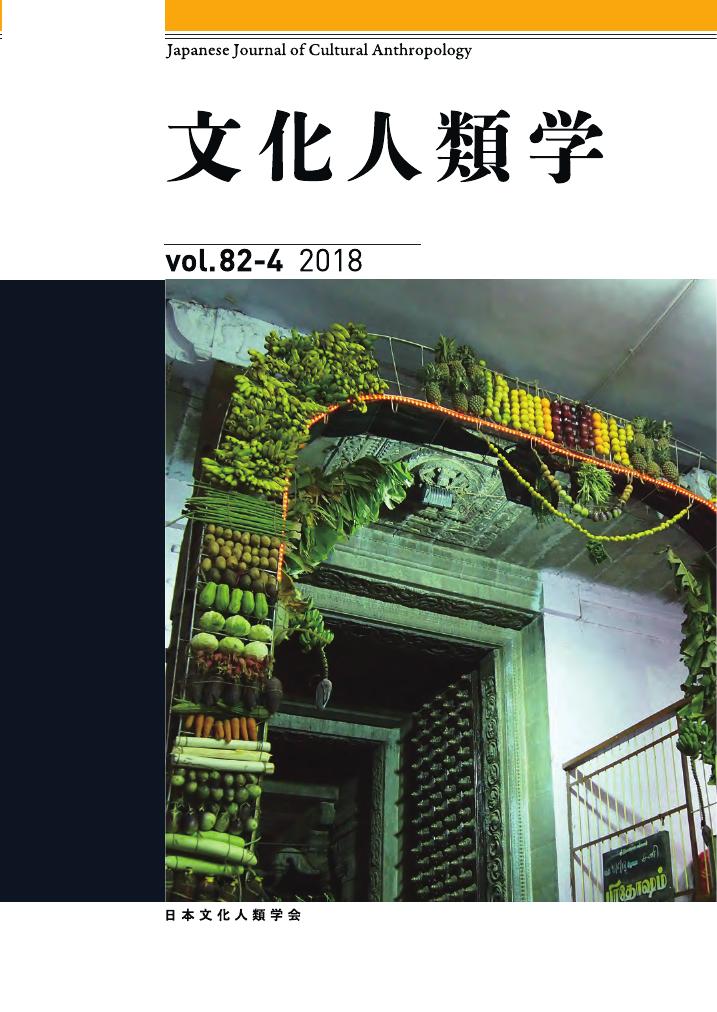
飛内悠子. 2018. "クク人と故郷カジョケジ——南北スーダンにおける人間の移住と場所の変容 (Kajo-keji as the Home of the Kuku--Transformation of Place through Peoples’ Migration in the Two Sudans)". Japanese Journal of Cultural Anthropology 82(4): 446-463.
故郷とはどのように創られていくのだろうか。そしてそれが移住を経験した人にとっての帰るべ き場所となるにはいかなる過程があるのだろうか。本論文は、南スーダン出身のクク人が、植民地 化や内戦等による移住を繰り返す中で「カジョケジ」と呼ばれる場所を故郷として眼差すようにな る過程を見ていくことを通して冒頭の疑問に答えることを目的としている。 クク人は東ナイル系の民族であり、内戦等の事情で多くがその地を離れた経験を持つ。彼らが現 在故郷とみなす南スーダン共和国旧中央エクアトリア州カジョケジ郡は、ベルギーによる植民地支 配期に名付けられた場所であり、彼らは移住を繰り返す中、各地のクク人同士による相互作用を通 しカジョケジを「ククの故郷」とし、さらにはカジョケジはククにとどまらず、カジョケジ出身者 すべての故郷とみなされる場合もあった。 そして第2次内戦終結後、カジョケジに帰還し、そこでの生活を経験した人々は、避難先での生 活を背景としながら、カジョケジにおける生活を通してカジョケジの中でのそれぞれの「ホーム」 を見出していく。だが、「外」に対する時は変わらずカジョケジはククという民族にとっての故郷 である。
Following the end of the second Sudanese Civil War (1985-2003), those living as refugees both inside and outside Sudan have become aware of the imminent approach of their repatriation. However, it is not simply a matter of returning home, as both the people and the place have been changed by the war. Anthropologists have shown that the relationship between humans and a place—especially ‘home’—has the qualities of plurality and flexibility. At the same time, they have established that ‘the home’ is ultimately important for people. The question of how that situation has developed, though, has not been answered. How is a homeland defined? How can it be ‘the place of return’ for people who have experienced migration? This paper explains the process by which the Kuku, an ethnic group in South Sudan, have come to recognize Kajo-keji as their home. The author sheds light on that process by citing the experience of the Kuku’s repeated migrations. She then presents several cases in which people who have repatriated to Kajokeji from elsewhere have renewed their view of Kajo-keji, finding their home through their lives there. The author attempts to answer the aforementioned questions through the case studies. The Kuku are an ethnic group in South Sudan whose homeland is considered to be Kajo-keji county, a border area between South Sudan and Uganda that lies inside the country’s Central Equatorial State. The Kuku, an eastern Nilotic people, use the Bari or Kuku language. While both the Kuku and other South Sudanese recognize Kajo-keji as the Kuku homeland, history shows that they came from northern Sudan. Kajo-keji, the nickname of a famous Kuku chief, was applied to the area by Belgian forces during the colonial years. Many of the Kuku people had to seek refuge or migrate because of colonialism, civil wars, and so forth, and that experience has had a great effect on their notions of home. The first case cited by the author in support of her thesis is the reburial of a well-known Kuku rainmaker. Members of the Kuku living in Khartoum—the capital of Sudan—supported the reburial of a famous Kuku rainmaker from Juba, the current capital of South Sudan, to Kajo-keji in South Sudan. Reburial is a popular practice among the Kuku, not only for rainmakers, but also for ordinary persons. It manifests the Kuku’s desire to ‘bring back’ their relatives or family members who died during migration to their ‘home’ of Kajokeji. The custom is thought to have been established after the Kuku migration began. The support for the reburial of the rainmaker from Juba to Kajo-keji by people in Khartoum suggests that the Kajo-keji was selected as the Kuku homeland through meetings and discussions by various Kuku in their various migration locales, along with the interaction among Kuku people in various places. In addition, judging from a case study of the meeting of a Kuku youth association in Juba, it appears that Kajo-keji is more than just the name of ‘the home of Kuku’ and a symbol of the Kuku people; it is also accepted as such by all of the people in the region. Through those processes, Kajo-keji has become the home of the Kuku and others who come from the area. The case of a recently repatriated family is also instructive. Following the end of the Second Sudanese Civil War, this particular family repatriated from Khartoum. For a number of reasons, the family members live in different places in South Sudan: some live in Juba, another in a college dormitory in Kajo-keji, and others in the village of Kajo-keji. The different places of residence have made the respective experiences of repatriation different for each family member. Certainly, life in the ‘home’ differs for each of them; in fact, each of them has found a different ‘home’. For example, a dormitory in Kajo-keji serves as the home of the second daughter of the family group living in Juba, who sometimes visits Kajo-keji. In contrast, the village of the father is the home of the lastborn boy, who lives there with his uncle’s family, which used to live in Uganda. Yet when those family members meet and talk with ‘the others,’ for each of them, Kajo-keji is considered their home. Through such case studies, we can understand that human migration is highly important to making a certain place a home. Because home is decided for relative reasons, two seemly contradictory issues―the idea that the relationship between home and human is changeable and multiple, and the idea of the home as a very important place (as it can hold people’s rights)—can coexist.

Giovanni Destro Bisol, Maria Enrica Danubio, Alessandra Magistrelli, Pietro Greco, Mariano Pavanello and Elena Gagliasso. 2018. "The Manifesto of Human Diversity and Unity, eighty years after the Italian racial laws". Journal of Anthropological Sciences. 96:1-5.
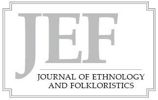
JÄRV, Risto. 2018. "Estonian Fairy Tales Up the Beanstalk into Heaven and Coal Porridge: Two Tales of Growing Up. Journal of Ethnology and Folkloristics. 12 (1): 7–20.
The article focuses on two Estonian fairy tale types that have been recorded among the Orthodox Seto minority in the south-eastern corner of Estonia. In the index of Estonian folktales they have been described under tales of magic (fairy tales) as tale types Ee 328C* and Ee 327H*. One of the tale types observed is a masculine folk tale (one with male protagonists), the other can be considered a feminine folk tale with female protagonists despite it seemingly having two main characters of different genders. In both tales the protagonists reach a hostile place after moving through liminality, and both tales can be interpreted as tales of growing up.

Jayaprakash, Jyothi. 2018. "Myths and Motives: Myths and Motives: Kodagu and the Story of the Kaveri Purana". Journal of Indian Anthropological Society. 53: 112-131.
This paper examines how specific myths are manipulated as ‘histories’ in order to assert supremacy, establish a hierarchy, and exercise power and control over people and resources. With specific references to the district of Kodagu in Karnataka, and the lesser known fact that Kodagu has recently raised a demand for a separate statehood, this paper takes a critical approach to the Kaveri Purana in particular, which is upheld as an undisputable theory of origin of the Kodavas. The paper examines the concept of ‘myth-making’, wherein the myth is repeatedly employed in the everyday life of the people of Kodagu to highlight assumptions of ‘greatness’ and ‘uniqueness’ that are attributed to their ‘history’, through a constant reiteration of the ‘Kshatriya’ motif. Through an analysis of the dramatized version of the myth presented by Kodagu’s first poet and playwright, Haradas Appacha (1866-1944) and through specific examples of the manifestation of the Kaveri Purana in Kodagu’s social and cultural life, this paper aims to interrogate how myths are manipulated in order to assert an authentic legitimacy by a concerted obliteration of the fine, yet definite line between myth and history. This paper argues that myths usually have an underlying motive of aspiration to power and also validations of political identity. The Kaveri myth has entered the public domain vis-à-vis statues of Kaveri as well as of Haradas Appacha. Interestingly, voices of resistance against this ‘grand Kodava narrative’ are raised by several other moolanivasis or original inhabitants of Kodagu, who have highlighted a supremacist tendency on the part of the Kodavas. Political groups in Kodagu constantly employ references to Kaveri which help provide the cultural dimensions to the political movement of separate statehood, but it remains to be seen how far the cultural enactment of the myth assures the success of the separatist movement.
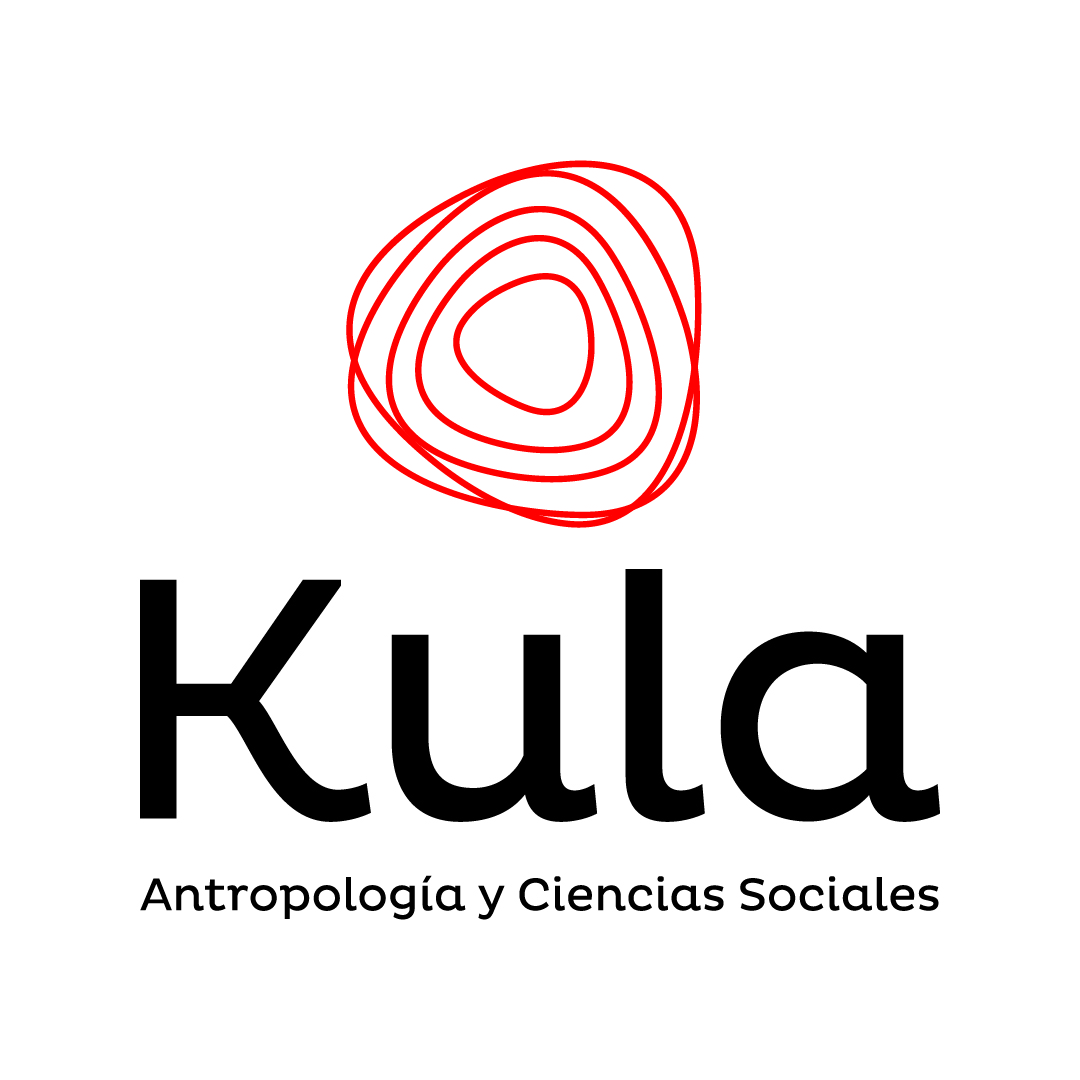
Fiamingo, Mariela Silvina. 2018. "LA DIVERSIDAD DE ENFOQUES SOBRE SALUD: ANÁLISIS DEL CASO DEL CONSULTORIO DE DIVERSIDAD DEL HOSPITAL FLEMING DESDE UNA PERSPECTIVA ANTROPOLÓGICA". KULA. 18/19: 54-69.
El objetivo de la presente investigación es describir cómo, quiénes forman parte del Consultorio de Diversidad del Hospital Alexander Fleming, de" nen, disputan, transforman y resigni" can las prácticas y los sentidos del mismo. En este espacio, dedicado especí" camente a la atención médica y psicosocial de las y los disidentes sexuales, se permite y fomenta la participación activa y el diálogo entre quienes lo integran, sean éstos médicos, coordinadores o asistentes, hecho que pone en tensión la lógica del MMH planteada por el antropólogo argentino Eduardo Menéndez (1992). La investigación que presentaré a continuación es el resultado de diez meses de trabajo de campo y el posterior análisis de los datos obtenidos en el mismo.
This article focuses on describe the way people who assist to Consultorio de Diversidad of Alexander Fleming's Hospital define, dispute, transform and resignify their practices and meanings. This place, specifically dedicated to medical and psychosocial care of sexual dissidence, promotes active participation and exchange between their integrants, even if they are doctors or assitants. In that sense, it comes into tension with Eduardo Menéndez's Hegemonic Medical Model (1992). This research is consequence of ten months fieldwork and posterior analysis of the data obtained.

Laszczkowski, Mateusz. 2018. "PAŃSTWO I RYZYKO: POLITYKA KONTROLI ODDZIAŁYWANIA NA ŚRODOWISKO PODCZAS BUDOWY TUNELU WE WŁOSKICH ALPACH (Risk and the state: the politics of environmental impact controls in tunnel-building in the Italian Alps)". . Lud. 102: 365-382.
Drawing on practices of monitoring health-threatening air pollution levels in a tunnel construction project in the Italian Alps, in this article I address the relationship between risk and the state. ‘The state’ emerges in various shapes from the practices of environmental risk management. With Timothy Mitchell’s concept of ‘enframing’, I analyse how state institutions normalise risk through statistically defined thresholds of acceptable concentration of airborne pathogens. However, controversies arising around these air-quality monitoring practices, as described in a subsequent part of the article, challenged the image of the state as a structure organising the socio-material reality. A space was opened for a critique of the power relations that lay behind the notion of ‘the state’.
Posługując się przykładem monitorowania stopnia zanieczyszczenia powietrza szkodliwymi dla zdrowia substancjami w trakcie budowy tunelu we włoskich Alpach, w niniejszym artykule rozważam relacje pomiędzy państwem a ryzykiem. W praktykach zarządzania ryzykiem środowiskowym wyłania się szereg postaci „państwa”. Stosując pojęcie enframing („ujmowania w ramy”) Timothy’ego Mitchella, analizuję sposób, w jaki instytucje państwowe normalizują ryzyko za pomocą statystycznie zdefiniowanych progów dopuszczalnego stężenia szkodliwych substancji w atmosferze. Jednak kontrowersje wokół praktyk monitorowania stanu powietrza opisane w dalszej części artykułu sprawiają, że skonstruowany w ten sposób obraz państwa jako struktury porządkującej społeczno-materialną rzeczywistość zostaje podważony i otwiera się przestrzeń dla krytyki relacji władzy ukrytych pod pojęciem państwa.

Heidemann, Frank. 2018. "DORFATMOSPHÄREN Hatti und keri der Badaga in Südindien". Paideuma. 64: 51-73.
According to Hermann Schmitz and Gernot Böhme, both representatives of the New Phenomenology in Germany, atmospheres are omnipresent and powerful entities. An atmosphere appears as a half-thing (or semi-object), transmits emotions, and is perceived by the f e l t b o d y (the Leib, according to Schmitz). It is co-created by actors and environments (or objects) and exists i n - b e t w e e n both (Böhme). This approach is used to investigate the emotional conjunction between the Badaga, South Indian peasants, and their villages. I use three central terms of Schmitz’s: ‘Bewegungssuggestion’ anticipates a movement and its potential meaning; for example, it adds meaning to a gesture. ‘Synästhethische Charaktere’ are inter-modular qualities of sensation; the quality of ‘dark’ or ‘bright’ refers to more than light rays, also appearing in other contexts. ‘Einleibung’ describes a kind of embodiment connecting persons with each other and with objects. Based on participant observation, interviews and visual representations, I shall argue that these concepts are a fruitful basis with which to discuss other ontologies of atmosphere. In Badaga villages persons and environments are inter-connected by specific forms of intimacy. The sound of the word ‘hatti’ (hamlet) evokes familiarity, dress-codes create contexts of social proximity, and architectural forms, especially keri (common verandas), refer to every-day cooperation and ritual fraternization.
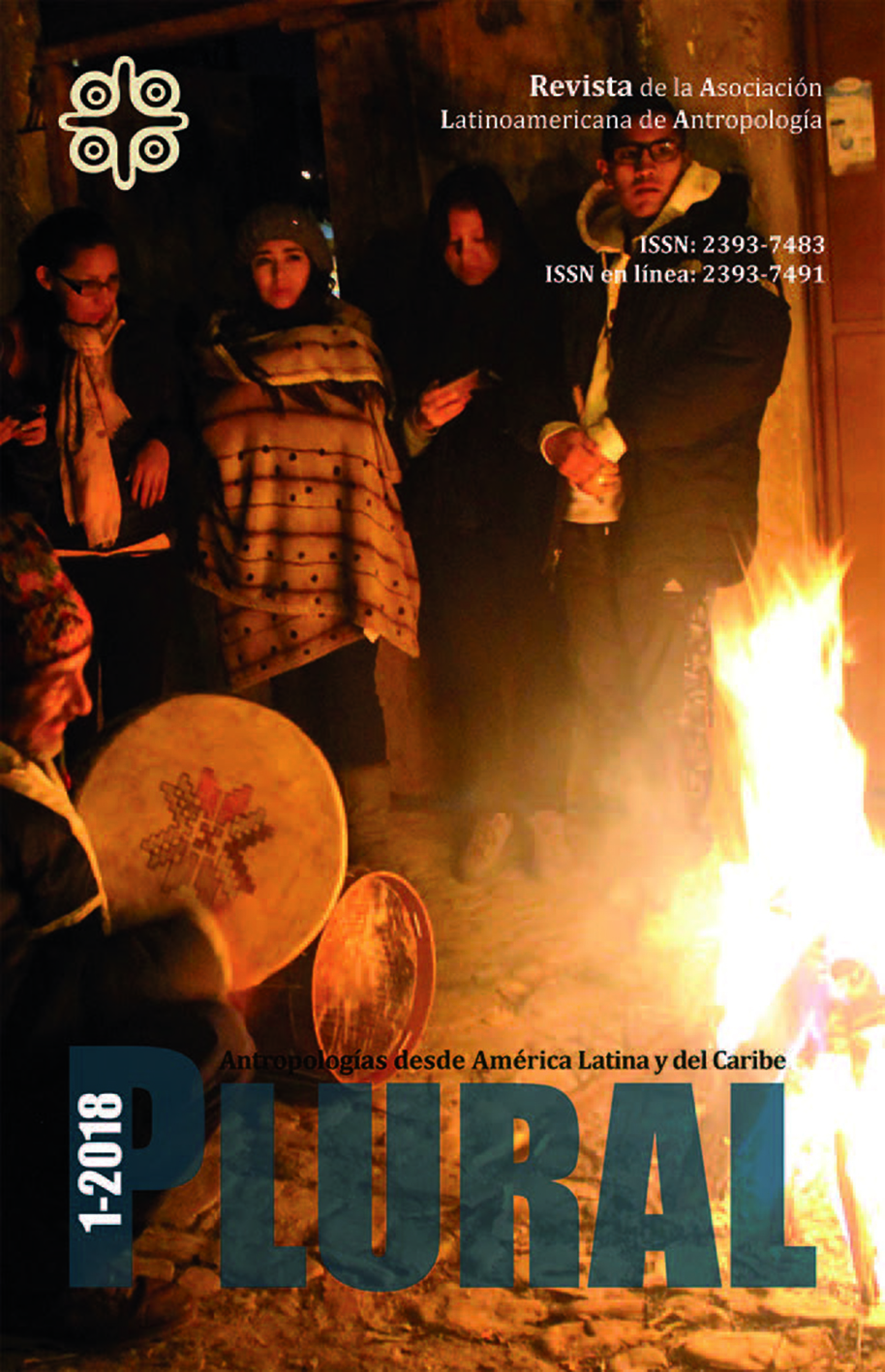
Guiza, Annel Mejías. 2018. "¿Cómo visibilizar la ciencia en el Sur? Crítica al sistema de indexación vigent (How visible is science in the South? Criticism of the Current Indexing System)". Plural. 1(1): 187-202.
La visibilización de las investigaciones generadas en América Latina, y la consiguiente evaluación de la producción científi ca en cada país, se soporta por la cantidad de publicaciones en revistas indizadas. Dichas publicaciones han pasado al formato digital. A pesar de haber cambiado de plataforma y de lugar al refl ejar lo que ocurre en el sur, los cánones de evaluación de revistas indizadas en América Latina se mantienen: califi car como “endogamia” el publicar a nuestros/as investigadores/as, la revisión por pares académicos, el proceso vertical para formar parte de los índices del norte, valorar más las publicaciones en inglés. Si estamos en el sur y necesitamos visibilizarnos, podríamos proponer un sistema que responda a nuestra diversidad. Porque el sistema vigente nos invisibiliza.
The visibility of research generated in Latin America, and the subsequent evaluation of the scientific production in each country, is supported by the number of publications in indexed journals. These publications have become the digital format. Despite having changed platform and place to reflect what is happening in the south, the canons of evaluation of journals indexed in Latin America remain: qualify as "inbreeding" publish our researchers, academic peer-review, the vertical process to become part of the indices of the north, most rating publications in English. If we are in the South and make us visible, we could propose a system that responds to our diversity. Because the current system makes us invisible.
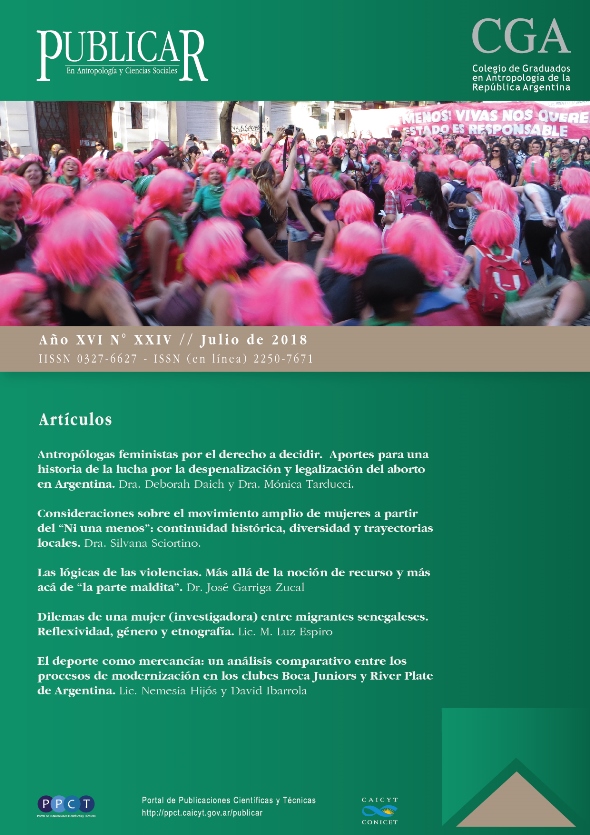
Sciortino, Silvana. 2018. "Consideraiones Sobre El Movimiento Amplio Muneres a Patir Del ‘Ni Una Menos’: Continuidad Historica, Diversidad y Trayectorias Locales. Publicar en Antropologia en Ciencias Sociales. 16(24): 27-47.
En este artículo nos proponemos comprender el contexto de movilización y organización colectiva de las mujeres en la coyuntura actual a partir de una serie de reflexiones que nacen del estudio del “movimiento amplio de mujeres” en la región y el país. La primera movilización por “Ni Una Menos” (2015) será considerada punto de quiebre e inicio de un nuevo “momento de apertura” del movimiento, en el cual las luchas, demandas y organizaciones ya existentes se reconfiguraron a partir de un escenario político-social específico. A continuación, identificaremos distintos momentos de la lucha de las mujeres en el país con el objetivo de reconocer el carácter histórico y diverso de un movimiento que se apoya en ambos aspectos para construir fuerza de adscripción. En primer lugar, avanzaremos en conceptualizaciones respecto al movimiento de mujeres como movimiento social específico. En segundo lugar, abordaremos momentos del movimiento de mujeres en el país los cuales consideramos antecedentes directos de las movilizaciones recientes. Nos referiremos a la reorganización del movimiento de mujeres posdictadura militar y a la reconfiguración del mismo con el ingreso masivo de las mujeres de sectores populares, ambos entendidos como “momentos de apertura” del movimiento, que anteceden al período en consideración.
In this article we propose to understand the context of mobilization and collective organization of women in the current situation based on a series of reflections that arise from the study of the “broad women’s movement” in the region and the country. The first mobilization for “Ni Una Menos” (2015) will be considered a breaking point and the start of a new “moment of opening” of the movement, in which the struggles, demands and existing organizations were reconfigured from a specific social-political scenario. Next, we will identify different moments of the struggle of womenin the country in order to recognize the historical and diverse character of a movement that relies on both aspects to build a force of ascription. First, we will advance in conceptualizations regarding the movement of women as a specific social movement. Secondly, we will address moments of the women’s movement in the country which we consider to be a direct antecedent of the recent mobilizations. We will refer to the reorganization of the post-dictatorship movement of women and to the reconfiguration of it with the massive entry of women from popular sectors, both understood as “moments of opening” of the movement that precede the period under consideration.

María Antonia Luis, Fabián Aníbal Quintero, María Fernanda Torres, Luis Eduardo Castro, María Florencia Cesani, María Laura Bergel, Mariela Garraza, Bárbara Navazo and Evelia Edith Oyhenart. 2018. "ANÁLISIS DE LA VARIABILIDAD DEL CRECIMIENTO INFANTIL EN DIVERSOS AMBIENTES DE LA PROVINCIA DE BUENOS AIRES, ARGENTINA (Analysis of the Variability of Child Growth in Various Environments of the Buenos Aires Province, Argentina)". Revista Argentina De Antropologia Biologica. 20(1): 1-14.
The aim of this study was to characterize and compare changes in child and adolescent growth in the districts of La Plata, Brandsen, Magdalena, and Punta Indio, province of Buenos Aires, Argentina, and determine their impact in urban and rural areas. A cross-sectional, anthropometric study was performed on 7,875 children aged 4.0-12.9 years. Body weight, standing and sitting height, tricipital and subscapular subcutaneous skinfolds were measured, and body mass index was calculated. Socio-environmental information regarding residence was obtained through a selfadministered survey. Differences among districts were calculated with frequencies, and data were compared using Chi2 and Tukey Tests. Anthropometric data were analyzed using linear model considering the variables age, sex, and district and their interactions. The results indicated that children from Punta Indio had greater weight and body size, greater subcutaneous fat reserves, and a higher percentage of fathers and mothers had formal employment and a higher educational level. We can therefore conclude that Brandsen, Punta Indio, and Magdalena, all surrounding the metropolitan area of La Plata, present considerable socio-environmental differences, although they share similarities in their landscapes as well as in their agricultural traditions. Such heterogeneity might be reflected in growth changes in the child and adolescent population.
A fin de indagar la incidencia de los cambios acaecidos en los ámbitos urbano y rural, el objetivo del estudio fue caracterizar y comparar la expresión del crecimiento infanto-juvenil en los partidos bonaerenses de La Plata, Brandsen, Magdalena y Punta Indio. Se realizó un estudio antropométrico transversal en 7875 niños/as de 4,0-12,9 años de edad. Fueron relevados peso corporal, estaturas total y sentado, pliegues subcutáneos tricipital y subescapular, y se calculó el Índice de Masa Corporal. La información socio-ambiental de residencia fue obtenida mediante una encuesta autoadministrada. Para estimar diferencias entre partidos fueron calculadas frecuencias y comparadas mediante pruebas de Chi2 y Tukey. Los datos antropométricos fueron analizados aplicando modelo lineal, considerando edad, sexo y localidad y sus interacciones. Los resultados indicaron que los niños de Punta Indio presentaron mayor tamaño corporal y ponderal junto con mayor reserva adiposa subcutánea, al tiempo que mayor porcentaje de padres y madres contaban con trabajo formal y niveles educativos más altos. Se concluye que Brandsen, Punta Indio y Magdalena, circundantes al área metropolitana de La Plata, presentan sensibles diferencias socio-ambientales, aunque compartan semejanzas en el paisaje y tradición agropecuaria. Esa heterogeneidad se vería reflejada en la variabilidad del crecimiento de la población infantil.

de Carvalho, Rosângela Tenório. 2018. "Cerimônia na alfabetização de jovens e adultos: aparato performático (Ceremony in youth and adult literacy: performative apparatus)". Pro-Posições. 29. 2 (87): 322-351.
A ação alfabetizadora pode ser analisada como um ritual de passagem da cultura oral para cultura escrita, na qual se atribui uma nova identidade – a do sujeito alfabetizado – e uma nova relação social a partir do enunciado sei ler. Neste artigo, a partir de uma análise de registro de cerimônias de abertura e de encerramento de Cursos de Alfabetização de Jovens e Adultos, sob a noção de cerimônia no campo da antropologia social de Stanley Tambiah, em convergência com o modo de problematizar os rituais de Michel Foucault, foi possível identificar como tais cerimônias, pelo seu efeito performático, constituem um aparato importante na produção do sujeito educado.
The literacy action can be analyzed as a ritual of passage from oral culture to written culture, in which a new identity is attributed, the literate subject, as is a new social relationship, from the statement "I can read". In this article, from an analysis of the registers of opening and closing ceremonies of Youth and Adult Literacy courses, under the notion of ceremony from the field of social anthropology by Stanley Tambiah, in convergence with the way of problematizing rituals by Michel Foucault, it was possible to identify how, because of their performative effect, such ceremonies are an important apparatus in the production of the educated subject.
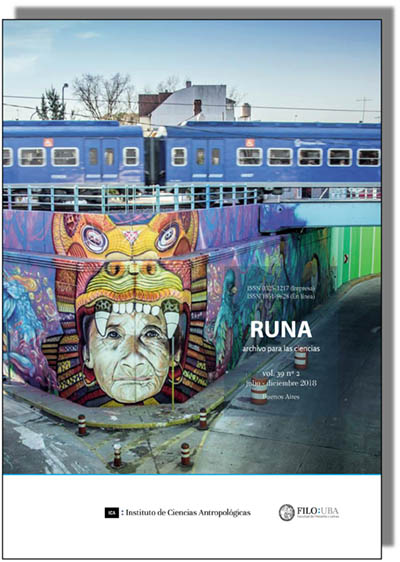
Lemmi, Soledad, Melina Mozelli and Ornello Moretto. 2018. " ‘Para no trabajar de sol a sol’ Los sentidos de la educación en jóvenes y adultos/as integrantes de familias migrantes bolivianos hortícolas del Gran La Plata - Buenos Aires, Argentina". Runa. 39(2): 117-136.
Neste trabalho propomos investigar sobre os sentidos que as famílias produtoras de hortaliças de Gran La Plata constroem em relação à educação. Eles são compostos principalmente de adultos migrantes de origem boliviana e suas crianças bolivianas e argentinas. Nesse sentido, abordaremos o significado que eles dão à escolarização, tanto nos casos de adultos que decidem retomar o ensino fundamental e médio, quanto de jovens que estão cursando o ensino médio. Da mesma forma, analisamos as estratégias que eles colocam em prática para completar a escolarização de acordo com esses sentidos. As informações foram coletadas a partir de uma metodologia qualitativa baseada no trabalho etnográfico. Avançamos aqui os sentidos adquiridos pela educação para essas famílias, tanto de adultos quanto de jovens, como uma estratégia de sociabilidade extra-quinta, bem como uma possibilidade futura de melhorar suas condições materiais de vida.
In this work we propose to investigate about the senses that the families that produce vegetables from Gran La Plata build with regard to education. They are composed mostly of migrant adults of Bolivian origin and their Bolivian and Argentine children. In this sense we will address the significance that they give to schooling both in cases of adults who decide to resume their primary and secondary education and of young people who are going through secondary school. Likewise, we analyze the strategies that they put into play to complete schooling according to these senses. The information was gathered from a qualitative methodology based on ethnographic work. We advance here the senses acquired by education for these families, both of adults and young people, as a strategy of extra-fifth sociability as well as a future possibility of improving their material conditions of life.

Zhu, Anna. 2018. "Bracing for the Vanilla Boom". Sapiens.

Robertson, Thomas and Trisia Farrelly. 2018. "An Ethnography of Entanglements: Mercury’s Presence and Absence in Artisanal and Small-scale Gold-mining in Antioquia, Colombia". sites. 15(1): 38-69.
This paper describes a ‘follow the thing’ methodology as applied to an ethnography of entanglements. This methodology allowed for a materially and politically nuanced understanding of Antioquia, Colombia’s response to mercury pollution. This pollution primarily originates from the Artisanal and Small-Scale Gold Mining (ASGM) industry where mercury is employed in the gold extraction process. In following the mercury, the authors experiment with an ethnography of entanglements. The paper discusses how they address the current lacunae in mining ethnographies by focussing on mining as ‘practice’, going past the provision of technical descriptions of mining and ethnographic descriptions of miners to an ethnography of mining. This ethnographic approach considers the politics of materiality and addresses a lack of attention to the impacts of the presence and absence of materials on social life. Various mining practices in Antioquia illuminate how entanglements between miners and mercury have been co-constitutive of particular modes of ASGM. The paper will also provide examples of ‘negative mercury entanglements’ where efforts have been made to extricate mercury from mining practices. Rather than creating a vacuum, these mercury absences have been generative of new contested symbolic and material arrangements including entrepreneurial and ‘responsible’ mining, debates over miners’ rights, and the creation of new political relationships between ASGM and large-scale mining companies.
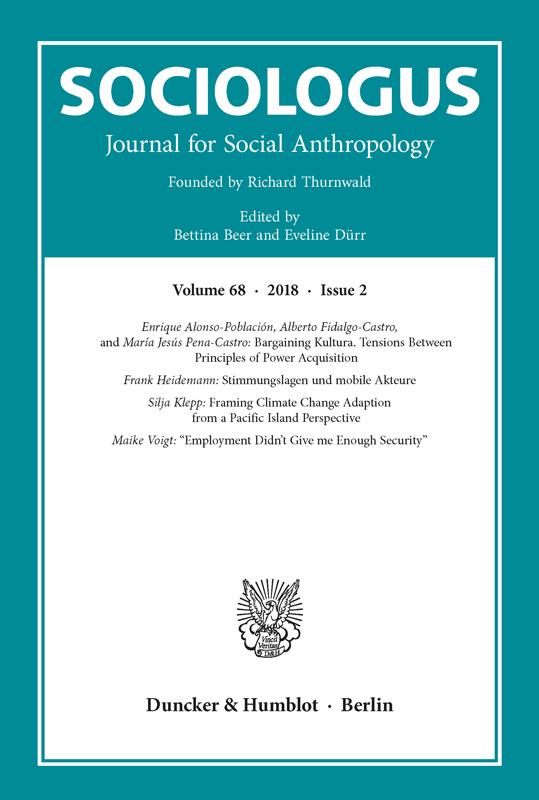
Voigt, Maike. 2018. "‘Employment Didn’t Give Me Enough Security’ Why Entrepreneurship Has Become an Opportunity and Security Measure for the Kenyan Middle Class". Sociologus. 68(2): 171-190.
This paper addresses the current appeal which entrepreneurship has among many better-off Kenyans. The paradoxical impression that Kenyans give up stable and secure employment to venture into their own business is resolved by looking at it from three different angles. First, the article looks into how employment is perceived today by Kenyans and shows that fixed employment has lost a lot of the attraction it used to hold both for those who are employed and those who left employment behind. Second, the concept of entrepreneurship is scrutinized by addressing the government’s changing stance towards small businesses and by questioning the common characteristic of the entrepreneur as a risk-taker. It is argued that against the background of widespread governmental support, entrepreneurship should instead be viewed as a security strategy in its own right. Third, the benefits of entrepreneurship, which employment cannot offer, are highlighted. The article thus explains Kenyan views on entrepreneurship and its desirability as a middle class career.
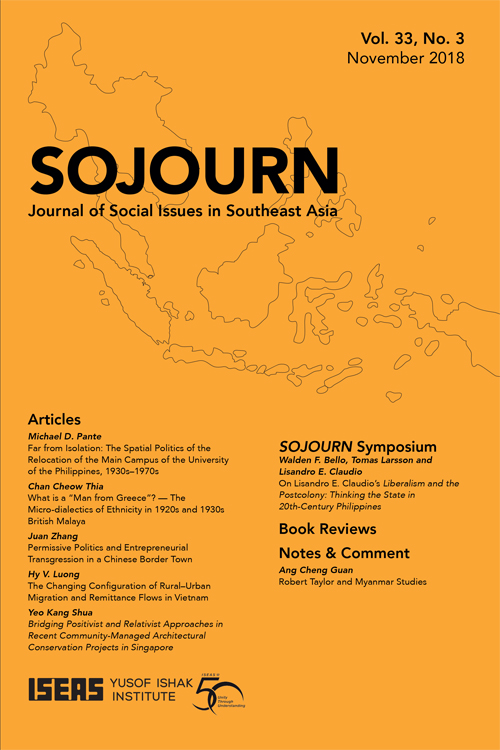
Zhang, Juan. 2018. "Permissive Politics and Entrepreneurial Transgression in a Chinese Border Town". SOJOURN: Journal of Social Issues in Southeast Asia. 33(3): 576-601.
Contemporary experiences of Han Chinese traders in Hekou, a remote town on the China-Vietnam border inform discussions of permissive politics and entrepreneurial transgression at the peripheries of the state. Permissive politics facilitates the transnational movement of goods across national borders in both formal and informal ways. Examination of cross-border smuggling as both an everyday strategy of profitmaking and an act of ordinary transgression clarifies the ways in which borderland permissiveness normalizes and even rewards certain unauthorized practices on the part of traders, vendors and individuals who undertake entrepreneurial activities.
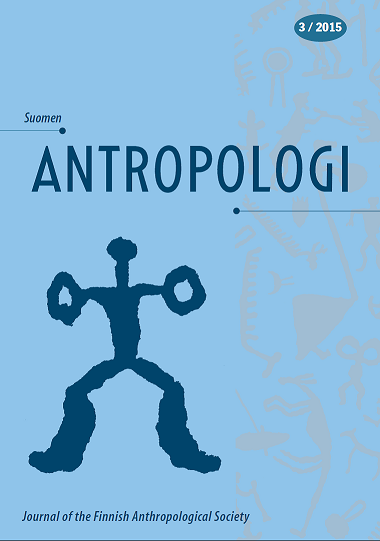
Tammisto, Tuomas. 2019. "Life in the Village is Free: Socially Reproductive Work and Alienated Labour on an Oil Palm Plantation in Pomio, Papua New Guinea". Suomen Antropologi: Journal of the Finnish Anthropological Society. 43(4): 19-35.
In this article I examine how Mengen working on and living near to a newly established oil palm plantation use the distinct categories of ‘village’ and ‘plantation’ to refer to different sets of relations and historical processes associated with the places. For the Mengen workers the plantation is simultaneously a place of hard and controlled labor, a site of earning sorely needed monetary income, and a place to momentarily escape relations in the village. The vast majority of Mengen workers are oriented towards village life and channel substantial amounts of their income back to the village. By examining the circulation of things and people between the plantation and surrounding villages, I look at how the two places, and the larger orders they represent, are in a direct, unequal, and complex relation with one another. While the surrounding villages subsidize the plantation and provide cheap labor, for the Mengen workers, the plantation is a place for reproducing village life and a generative place of forming new social relations. As both an oppressive and generative place, it is for the Mengen highly ambiguous, as are the larger orders it materializes and stands for.
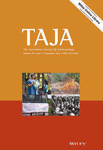
Smith, Will. 2018. "Weather from incest: the politics of indigenous climate change knowledge on Palawan Island, the Phillippines". The Australian Journal of Anthropology 29 (3): 265-281.
Indigenous peoples’ understandings of climate change are often interpreted through an instrumental prism that privileges the ecologically adaptive nature of belief and practice. This paper explores the limits of this perspective by considering the environmental narratives of self-blame among households in the uplands of Palawan Island, the Philippines. In the south of the island, indigenous Pala’wan widely suggest that cyclical El Ni~no Southern Oscillation driven variationin rainfall and related food insecurity is the product of a linear change in climatic patterns occurring over the past several decades. This perceived climate change is explained in reference to the popularity of incestuous relationships and a decline in ritualised executions. Through an ethnographic focus on the politics of climate knowledge, I argue that Pala’wan narratives of self-blame speak as much to ongoing struggles between indigenous people and the Philippine state over control of the forested uplands as it does to the grounded and empirical qualities of indigenous environmental knowledge.

Bertullo, Mag. Victoria Evia. 2018. "SABERES Y EXPERIENCIAS SOBRE LA EXPOSICIÓN A PLAGUICIDAS ENTRE MUJERES QUE RESIDEN EN CONTEXTOS AGRÍCOLAS EN SORIANO, URUGUAY". Trama. 9: 13-35.
En Uruguay aumentó el uso de plaguicidas asociado al proceso de intensificación agrícola de los últimos quince años. Este trabajo aborda las experiencias de exposición a plaguicidas y los saberes sobre esta entre mujeres que residen en contextos agrícolas en el departamento de Soriano, Uruguay, desde la perspectiva de la antropología médica crítica. Se presentan y analizan los resultados obtenidos mediante una metodología de talleres participativos en tres escuelas rurales de la zona, en el marco de una investigación etnográfica más amplia. Se encontró que los contextos de exposición están estructurados por la división sexual y social del trabajo, y del espacio doméstico y productivo. También que la exposición a plaguicidas afecta la vida cotidiana de formas que trascienden la dimensión de la «enfermedad» entendida en términos biomédicos; estos incluyen problemas relacionados con la calidad ambiental de los entornos cotidianos en los que las personas reproducen su vida, situaciones de conflicto interpersonal entre actors sociales con posiciones de poder desiguales en el territorio y una serie de padecimientos que son naturalizados como parte de la vida cotidiana. Se concluye que lo anterior expresa un proceso de sufrimiento ambienta.
In Uruguay, the use of pesticides increased due to the agricultural intensification process of the last fifteen years. This work addresses the experiences of exposure to pesticides and the knowledge about pesticides among women residing in agricultural contexts in the department of Soriano, Uruguay, from the perspective of critical medical anthropology. The results presented were obtained from participatory workshops developed with children and women from three rural schools at the Soriano department. This methodological design is part of a larger ethnographic fieldwork work developed in the area between September 2016 and July 2017. It was found that exposure contexts are structured by the sexual and social division of labor and domestic and productive space. It was also found that exposure to pesticides affects daily life in ways that transcend the dimension of the «disease» understood in biomedical terms. These include problems related to the environmental quality of the everyday environments in which people reproduce their lives, situations of interpersonal conflict between social actors with positions of unequal power in the territory and a series of illnesses that are naturalized as part of everyday life. It is concluded that the foregoing expresses a process of environmental suffering.
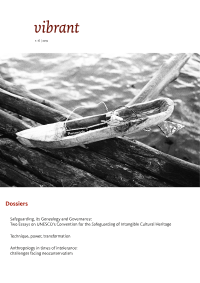
Ferreira, Andrey Cordeiro. 2018. "Societies "against" and "in" the State – from Exiwa to the Retakings: Territory, autonomy and hierarchy in the history of the indigenous peoples of Chaco-Pantanal". Vibrant. 15(2): 1-27.
The purpose of this article is to conduct an exercise in historic anthropology and an anthropology of territory, based on an ethnography of the experiences of domination and resistance experienced by the indigenous peoples of Pantanal, in particular the Terena, within the processes of colonization, formation of nation states and capitalist development in South America. We will analyze experiences of indigenous autonomy against and in the state, and their dialectical territorial expression in the colonial world and in the contemporary dynamics of territorial and interethnic conflict in twenty-first century Brazil.
